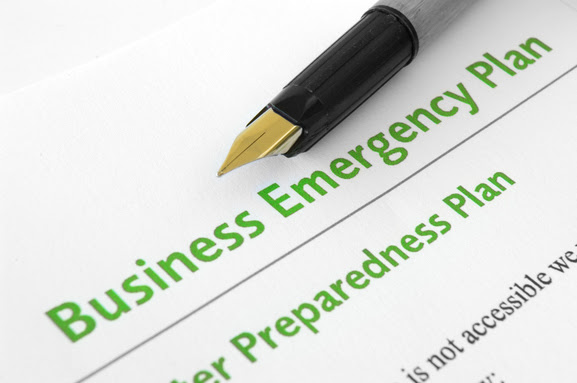What Can Businesses Learn From Katrina?
 |
When Hurricane Katrina hit New Orleans ten years ago this week, it devastated the local business community as well as individual citizens. According to a report by ABC News, insured losses alone totaled $40 billion.
That’s a sobering statistic given the inevitability of disasters and emergencies. It can be especially daunting when you think about the whole range of potential events. Natural disasters, technological failures, pandemic—the list goes on. The good news is that you can take steps now to prepare for disasters, mitigate potential damage and plan for how your business will recover.
Hurricane season is already underway in the Atlantic and Pacific, and September starts National Preparedness Month with this year's theme of "Don't Wait. Communicate. Make Your Emergency Plan Today," so read on for tips, resources and training to help make sure your business is prepared and can recover when disaster strikes.

What Did We Learn?
Hurricane Katrina left disaster and loss in its wake. But it also left behind countless lessons about how businesses can better prepare for and respond to devastating storms.
Read this official White House “lessons learned” report to be better prepared.
In the event of an emergency, you and your employees can’t be expected to take steps to protect the business unless you are safe and you know your families are, too. To that end, be sure to prepare your home and family for an emergency, and encourage your employees to do the same. For more information, check out Are You Ready? An In-depth Guide to Citizen Preparedness, available from the Federal Emergency Management Agency (FEMA). This book can be used either as a reference or as a step-by-step manual.Ready.gov also provides a wealth of preparedness information.
To learn more, read the GPO Government Book Blog's fascinating article "Hurricane Katrina, 10 Years Later" about some of the terrific Natural and Environmental Disaster books from the Federal Government with findings and lessons learned after Hurricanes Katrina and Sandy.
|

Can Your Vendors Continue to Supply You?
Roughly 40 to 60 percent of businesses never recover from a crippling disaster, according to the SBA. That means you don’t just need to think about the continuity of your own business, but also that of your suppliers. Check out the SBA’s PrepareMyBusiness.org si
FEMA also publishes extensive tips and disaster preparedness resources for businesses via Ready.gov/Business.
|

What Are Other Businesses Doing?
Wondering how well prepared your business is compared with your competitors and colleagues?
This fascinating FEMA report on the state of disaster preparedness among businesses holds many invaluable insights and recommendations. For one, the report finds that businesses tend to focus on data storage and internet security over continuity of business operations.
That’s not enough, according to the report. Organizations also have to consider the human side of how the business would keep running. Plans are also only valuable if they are clearly communicated to employees!
|

Storm Lessons for Builders
Are you in the construction or real estate industry or own a business or home in an area prone to natural disasters?The following two excellent FEMA publications cover best practices for constructing and rebuilding homes and businesses in high-risk disaster areas.
This book on renovating substantially damaged homes provides information about restoring and selling homes that have been damaged, from assessing the cost of repairs to acquiring necessary permits.
Because coastal regions can be especially vulnerable to natural disasters, be sure to also check out FEMA’s series of fact sheets on technical guidance regarding the construction and renovation of coastal buildings.
|
 |
BusinessUSA’s Disaster Resourc
For more information on how businesses can mitigate the threat of disaster, check out the BusinessUSA Disaster Preparedness Tool, which highlights additional resources to help with disaster preparedness and recovery.
|

Active Shooter Training for Businesses
Could a disgruntled current or former employee someday decide to exact revenge on you or your employees? Workplace shootings—a different kind of disaster for businesses—are no longer out of the realm of possibility. Moreover, they are by nature unpredictable and confusing events—not to mention frightening and dangerous. Apart from workplace and building security measures you may already have in place, make sure you and your employees know how to react should such a crisis arise.
Read about the Department of Homeland Security’s free training and materials for preparing your employees to deal with an “active shooter” scenario at your place of business.
|
Comments